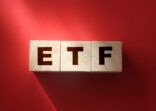Physically replicated ETFs, utilising new access channels to China’s stock exchanges, had superior tracking performance and a lower tracking error compared to synthetic ones, the report stated.
The study of 20 ETFs tracking the FTSE China A50 Index, the CSI 300 Index and MSCI China A Index showed that the physically replicated ones had a mean daily tracking difference of -0.25 basis points, while the synthetic ones had -1.20 basis points, over the past three years.
According to FSA’s estimate, the daily 0.95 basis points difference translates into an approximately 2.3% difference in annual return.
Physical vs synthetic
A physical ETF holds securities included in the index while a synthetic ETF relies on derivatives such as swaps as an investment strategy.
Morningstar found that the tracking difference was particularly pronounced during market shocks. In July 2015, when the China A-share market plummeted, the tracking difference of both synthetic and physical ETFs increased, but the effect was smaller for the physical ones, according to the study.
Physically replicated ETFs have, on average, a higher total expense ratio compared to synthetic ETFs, by 27 basis points, in the sample of 20 major China A-share ETFs analysed by Morningstar.
Early China A-share ETFs were severely restricted in their ability to invest in Chinese equities directly. In order to replicate the performance of a China index, they had to rely on derivatives. The fluctuating cost of this method contributed to the fund’s tracking difference.
As China gradually opened its capital markets to foreign investors, avenues became available for foreign fund managers to invest in A-shares directly. Today, they use the Qualified Foreign Institutitonal Investor (QFII) scheme, its renminbi equivalent (RQFII), and the two stock-trading schemes: the Shanghai-Hong Kong Stock Connect and its Shenzhen-Hong Kong counterpart, launched in November 2014 and December 2016, respectively.
“Having access to new channels to plug into the China A-share markets should help reduce costs for ETFs and other investment products,” wrote the authors of the report: Jackie Choy, director of research for Asia, and Ben Johnson, director of global ETF research at Morningstar.
As the number of China A-share ETFs domiciled outside China grows, reaching 79 at the end of 2016, newly-launched products tend to opt for physical replication.
While this approach does not eliminate index tracking difference, Morningstar’s statistical analysis concludes that physically replicated ETFs show smaller tracking differences than synthetic ones.
Tracking difference, the difference between returns of the fund and those of its benchmark, is caused by management fees, trading expenses, “cash drag” from uninvested cash, and the practice of “sampling” – investing only in a selection of more liquid components of an index to approximate its performance.
















